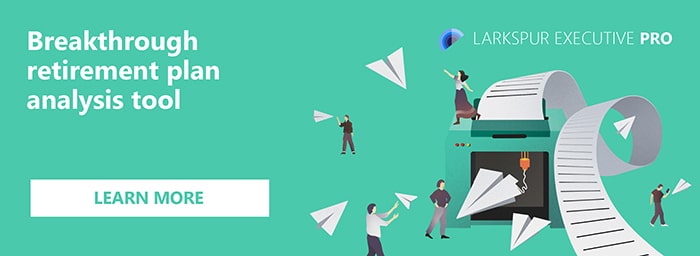
In the past much has been said about the efficiency of the traditional Assets Under Management (AUM) structure, based on a high minimum level of assets, but without a single fee model suitable for every client and advisor. Today, clients tend to want a more holistic approach to financial advice; one that is based on helping them achieve their financial goals. Which is why, increasingly, alternative fee arrangements are in high demand.
For clients 55 years and older, AUM is the go to model, due to its simplicity. They often think about the commission from the point of view of AUM. It is profitable, and the next generation is willing to pay the fees.
At this point it seems likely that the asset-based fee model isn’t going anywhere, at least for the time being.. So, if firms want to create new opportunities, they should consider non-traditional fees as simply another way for their advisors to reach leads or optimize existing relationships; especially when it comes to the younger ones and investors. In particular children and the inheritors of existing clients. The hope is that alternative reward structures will provide an opportunity to interact more effectively.
Next-Gen Investors
Offering a fee-for-service arrangement, and looking beyond traditional asset-based fees and commissions might work well for advisors hoping to attract and retain the next generation of clients. For some clients who may not meet the asset minimum, it is also important to establish a relationship with a consultant for detailed advice or financial planning.
As a new generation of investors begins to seek financial advice, they may be looking for more non-traditional fee arrangements in comparison to how they currently pay for other services. And the willingness to pay for advice has also grown significantly.
«Many in the next generation of clients are looking for different and more collaborative relationships with their advisors. Offering a service and fee model that dovetails with these evolving client relationships is a trend that will likely continue over time» TheStreet says in their “Business Trends for Financial Advisors to Watch in 2021”.
Also, according to Cerulli’s report “Modernizing Fees for 21st Century Advice,” currently the most popular non-traditional fees are fees for financial plans, charged by nearly a third of advisors. And 80% of clients will receive some form of planning advice by 2022.
There is now a shift towards alternative fee structures from Assets Under Advisement (AUA) to subscription-based (hourly, monthly or yearly) and hybrid approaches, although the AUM model remains the most prevalent. For those market segments where charging an AUM-based fee is not the best option, advisors can charge subscription fees and offer their services.
These options can be attractive to those known as HENRY, or “high income but not wealthy” investors.
According to Cerulli’s report, 13% of investors under the age of 30 said hourly fees are more preferable for them. Also, aligning the value of advice with a financial plan and process, rather than just investment management, can make it much easier for the advisors to convert a prospect to a client.
This is a hot topic in the industry. There is nothing wrong with the AUM model itself. However, it may not be suitable for the type of customer you want to serve. Many consultants stick with what works best for them. Thinking about your niche and finding the right model for you is probably the best attitude to have. Ask yourself what problem you’re best at helping clients solve. All models have advantages and disadvantages. It all comes down to what is convenient for the advisor and clients.
Please do not hesitate to contact our client success team to learn more about Rixtrema’s financial planning software platform at clientsuccess@rixtrema.com.



